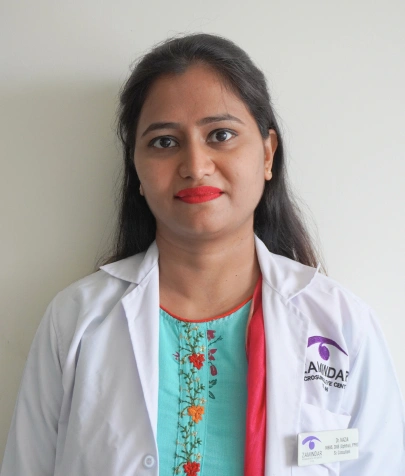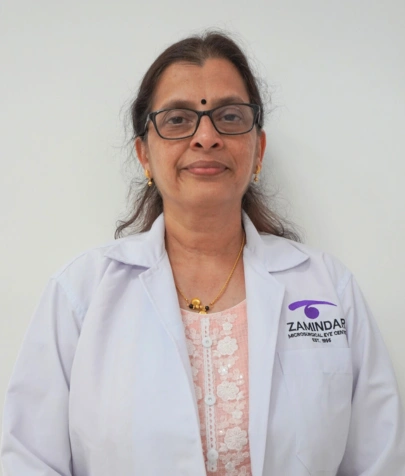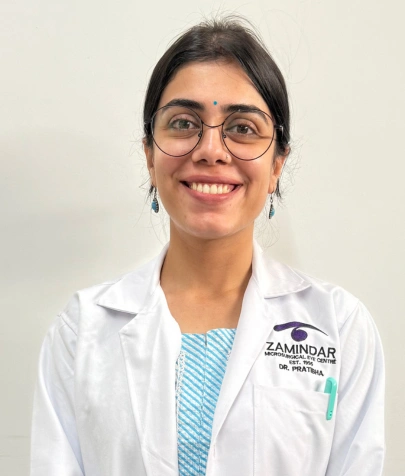
Parents try their best to ensure their little one is healthy, happy, and thrive to their best potential. They consult paediatricians regularly, upgrade their nutrition timely and so on. However, many parents may fail to focus on eye health as they do not show apparent signs and symptoms of eye problems.
But, regular eye checkups play an important role in identifying developmental problems, which may not show apparent signs and symptoms. Early detection helps in taking measures to prevent eye conditions in later stages of life. Let us understand vision development before we learn about early eye checkups.
Vision development in infants
At birth, infants can see an object clearly at a distance of 8 to 12 inches from their eyes. Beyond the viewing distance, they appear as gross, blurred shapes as their visual system, including the eye and the part of the brain that processes vision, are still developing.
By 2-4 months, babies develop the ability to coordinate their eye movement and fixate their gaze on a target, such as faces, toys or moving objects. They develop the ability to gauge how far an object is in 6 months. Between 1-2 years, sight develops rapidly. By the age of years, kids develop eye-hand coordination, which supports complex activities, such as catching a ball rolling over the floor.
Ref: https://www.ncbi.nlm.nih.gov/pmc/articles/PMC9777216/ & https://www.aoa.org/healthy-eyes/eye-health-for-life/infant-vision?sso=y
When should children get their first eye checkup?
Children should receive their first comprehensive eye checkup from a paediatric ophthalmologist at the age of 6 months. It includes
- Questionnaire for parents about family history of eye health and complications during pregnancy and/or childbirth.
- A penlight examination to check the pupil response to the presence and absence of light
- An eye movement test that involves moving an object that makes a sound and tracking the baby’s ability to move its eye in the direction of the object
- Eye alignment test to check whether the baby’s eyes are moving in a coordinated manner and rule out the conditions, such as strabismus.
In addition, the paediatric eye doctor may also examine the eye for structural abnormalities, including cataracts, glaucoma, and other abnormalities.
The best paediatric ophthalmologist in Bangalore advises additional tests, such as visually evoked response tests, retinoscopy, and ophthalmoscopy, to rule out the early signs of eye abnormalities, which may develop in later stages.
After the first examination, ophthalmologists advise parents to keenly observe kids for abnormal behaviours that may arise due to eye problems, such as unusual sensitivity to light and inability to focus.
Regular eye checkups for kids
Generally, regular paediatric eye checkups for kids begin with a questionnaire for parents about the presence of abnormalities, such as
- Delayed motor development
- Frequent eye rubbing
- Excessive blinking
- Squinting
- Failure to maintain eye contact
- Any apparent misalignment of the eyes
- Inability to maintain a gaze (fixation) while looking at objects
- Poor eye-tracking skills
- Names and purpose for any current medications
They also include a visual acuity test to check for near or far-sightedness. Eye doctors use LEA symbols for preschool kids as an alternative to alphabets.
In addition to vision deficits, doctors also carry out screening tests for the following conditions.
- Lazy eyes
- Misalignment of the eyes
- Inability to maintain eye alignment when viewing near objects.
- Reduced focusing ability.
- Impaired depth perception
- Eyelid health issues
Why do children need regular eye checkups?
Regular eye examination in early childhood helps prevent unnoticeable vision issues from hindering overall development.
Detection of eye issues
Early eye checkups can help parents detect potential vision problems or eye conditions that might not be immediately noticeable. It allows for timely intervention and management, preventing further complications.
Correction of Refractive Errors
Early identification of near-sightedness, farsightedness, and astigmatism helps correct refractive errors. It enhances a child’s academic performance and overall quality of life.
Prevention of Academic and Developmental Challenges:
Undiagnosed vision problems can hinder a child’s ability to learn and develop optimally, which hampers their social skills, confidence, and self-esteem.
Prevention of Long-Term Complications:
If left untreated, some eye conditions can lead to severe and irreversible vision loss. Early detection and treatment can prevent or minimize the progression of these conditions, ensuring a child’s visual health in the long run.
Aids in Behavioral and Learning Assessments:
Some children’s behavioural issues or learning challenges may result from undiagnosed vision problems. Early eye checkups can help differentiate between vision-related issues and other causes, leading to appropriate interventions.
Conclusion
Comprehensive early eye checkups help identify unnoticeable vision-related issues and prevent future complications by allowing doctors to treat and manage the conditions.
At Zamindar Microsurgical Eyecentre, we are committed to providing high-quality diagnostic and therapeutic services with state-of-the-art medical technologies. Visit our Pediatric OPD for a thorough eye examination and intervention for your kids. Follow us on Twitter, Facebook, Instagram, LinkedIn and Youtube for more educational posts.













